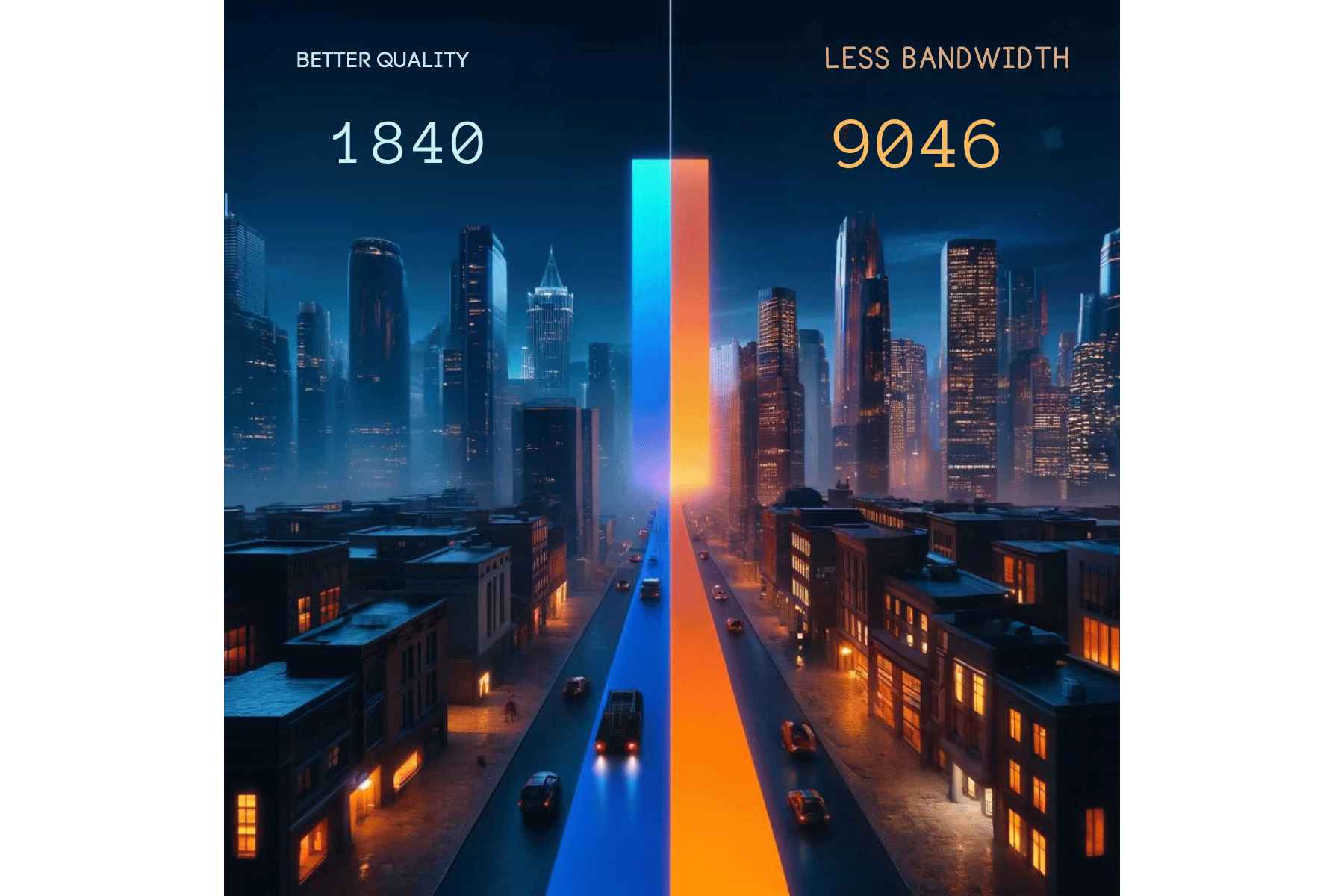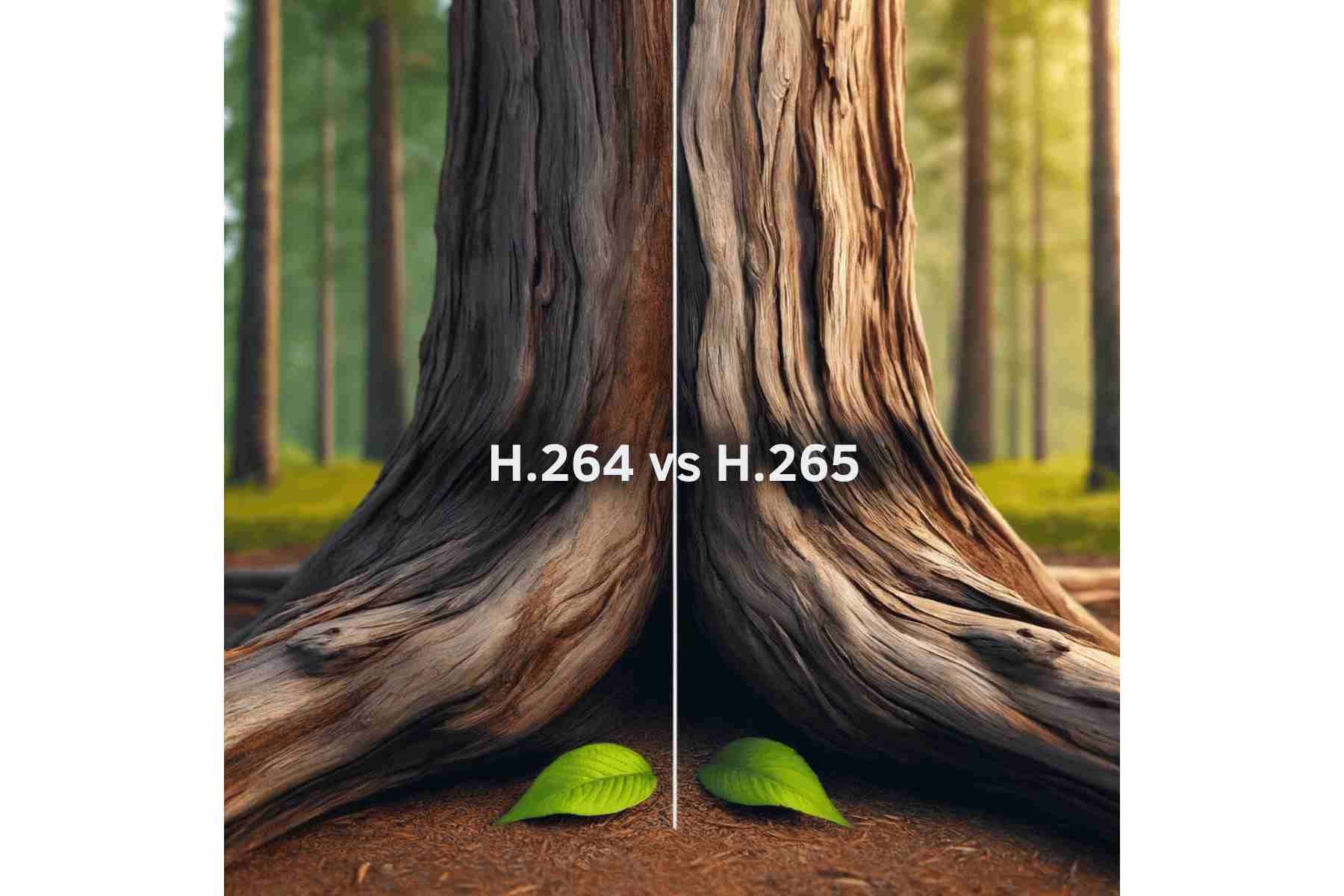H.264 vs H.265: How to Choose the Right Video Format
Table of content
Introduction:
Conserve space, save precious time, and choose the perfect video format. Both H.264 and H.265 are available for the purpose of video file compression. H.264 has been considered the standard for many years and has the ability to reduce file sizes, enabling a satisfactory level of video quality. H.265 is an even more advanced type of video technology that reduces efficiency by 50% yet still maintains the same video quality of video half size. Consequently, video streaming speed is improved, and storage is being optimized. This blog will explain the major differences between H.264 vs H.265, as well as provide guidance on which video compression format is right for you. Ultimately, this blog is intended to help you determine what format will work best for your workflow, storage capabilities, and viewing experience.
What is H.264?
H.264, also called Advanced Video Coding is a video format that has transformed video compression since it was introduced. Its influence on streaming, media, and entertainment is profound and significantly improving the internet viewing experience.
As the MPEG-4 Part 10 standard, H.264 is a leading video compression format recognized for minimizing file sizes without damaging quality, making it popular with companies like YouTube, Netflix, and cable.
H.264 encodes video frames efficiently which ensures steady playing over a diverse range of network sizes and device types. This format’s utility and performance have rendered it indispensable to streaming, broadcasting, and conferencing in association with CP-8851-K9.
What is H.265?
H.265, alternatively referred to as High-Efficiency Video Coding (HEVC), is the new video format following H.264 that offers superior video quality. This video coding standard will compress video more effectively than earlier coding standards, creating videos of good quality while doubling the compression level.
H.265 is a video codec that has been aimed at offering an improved image with the identical data as its preceding equivalents. The fact that it is capable of bringing in high-resolution video and keeping the file size small while at the same time providing options to the user makes it an essential tool in the field of digital media today. Nowadays, it is used with CP-8832-K9 in most situations.
H.264 vs H.265: Features

Here’s how these two video formats handle compression and device compatibility:
| Feature | H.264 | H.265 |
|---|---|---|
| Video Compression | It employs well-known compression methods. | It uses some top-notch squishing methods so you end up with tinier files. |
| Resolution Support | Handles Full HD resolution, which is 1080p. | Handles Full HD resolution, which is 1080p. |
| Platform Compatibility | Compatible with most devices and platforms. | Not compatible with all devices; requires new hardware. |
| Processing Requirements | It needs less processing power, so it will run on older hardware. | It requires more processing power while encoding and decoding. |
H.264 vs H.265: Benefits

Following are the main advantages each format offers for video quality and file size:
| Benefits | H.264 | H.265 |
|---|---|---|
| High Video Quality | Maintains good quality at lower bitrates. | Provides better-quality video, especially at lower bitrates. |
| Widespread Use | Widely adopted, works with most video players and streaming services. | Offers improved performance for modern high-resolution content. |
| Lower File Size | Produces larger files compared to H.265. | Significantly reduces file sizes without sacrificing quality. |
| Energy Efficiency | Performs well across diverse network conditions without high energy costs. | Better suited for modern media, offering superior compression and quality. |
H.264 vs H.265: Key Differences and Why H.265 Is Gaining Importance
H.264 vs H.265 are two video compressors that are designed to serve varied purposes in different situations.
Here’s a breakdown of how they differ and why H.265 is becoming increasingly significant:
Compression Efficiency:
- H.264
Videos’ space-saving long has been dependent on the H.264 standard to reduce the sizes of the files without causing a substantial impact on their quality. However, because of the emergence of ultra-high-definition formats like 4K and 8K, which H.264 is not able to provide, the small file size and high-quality output still have been less efficient with its use.
- H.265
It handles compression up to 50% better than H.264 which means that one will get the same video quality at half of the file size, particularly in streaming 4K and 8K content. It has greater efficiency and helps reduce the amount of data needed for high-resolution videos, making them more feasible for modern streaming needs.
Compatibility:
- H.264
One of the greatest advantages of H.264 lies in its compatibility with most devices and platforms. Whether you play a video over an old smartphone or the latest smart TV, most probably, there won’t be any issues in H.264. A lot of applications use it as a default because it has wide support.
- H.265
H.265 provides better technical performance, it is considerably less widely supported than H.264. While there are newer and newer systems and platforms that are beginning to support playback of H.265 media, there are still many older systems that can’t run H.265 video without major issues, as not all older hardware and software can necessarily decode it, causing potential playback issues with older hardware and software.
Processing Power:
- H.264
It is designed to be light on resources, meaning that it requires much less processing power, which makes it a good choice for systems that may be a little older or with lower computing capabilities. This is why it’s frequently used for live streaming and video calls, as encoding is much faster.
- H.265
It needs a lot more power than H.264 because of its advanced way of compressing videos. This extra demand can be tough for older devices to handle, so it works better on newer systems with more processing strength. On modern devices, H.265 can give you better video quality and smaller file sizes.
Adoption:
- H.264
It is widely known and used in many different fields. You can find it in all sorts of devices, from smartphones to professional video equipment, which shows how flexible and dependable it is. Big tech companies started using it early on, and it’s part of global standards, making it the usual choice for many video tasks around the world.
- H.265
It is gaining popularity, especially as the demand for higher-quality video increases. It hasn’t yet reached the same level of adoption as H.264. However, as more people upgrade to newer devices and the need for better compression grows, H.265 is becoming more important in the world of digital media.
H.264 vs H.265: Which One to Use?
The question of which to use, H.264 or H.265, really depends on what you need. Technically, H.264 offers more compatibility, and it is a tried-and-tested, reliable codec that works for the vast majority of devices. H.265, on the other hand, offers better quality and smaller file sizes, which is ideal for 4K and 8K video. However, H.265 is more complex to decode, and more powerful hardware will be needed, especially for older and cheaper devices. Consider whether you need broad compatibility, in which case you would consider H.264, or if you favor quality and saving space, in which case H.265 is your best option.
Conclusion:
H.264 and H.265 are video compression formats that are utilized to process videos. H.264 is the most common format because of its compatibility with almost all devices. It is widely used for transmitting videos like video calls and streaming. It is helpful for streaming videos with small file sizes without any quality loss. H.265 is newer and optimized, and it is the latest video compressed format. It is superior in its compression process, which is offered to reduce 50% of the file sizes, maintaining video quality, which is suitable for 4K and 8K. However, it also demands more processing power than H.264, and it may have compatibility issues with older model devices. When you are deciding on H.264 vs H.265, it’s basic to consider the compatibility of the device and the need for a smaller file size. For the most part, H.264 is best for the compatibility that comes with many devices, and H.265 is geared for efficiency and video streaming for a higher resolution than what is provided by H.264. Moreover, in terms of video conferencing devices, like CP-7861-K9 and CP-8811-K9, some devices are successful with H264 vs H265.
Frequently Asked Questions:
What is a video codec?
Video codecs are software tools that compress or decompress large video files without sacrificing the quality of the content. These codecs employ algorithms to compress video files, reducing transmitting time and space.
H.264 vs H.265: Which one is better?
It depends on your unique requirements. If you are dealing with high-resolution video formats (4K and 8K), H.265 should be the first choice. On the other hand, if you have some older devices to deal with, you have to turn your head towards H.264.
Is H264 highly compatible?
The simple answer is yes. AVC or H264 is widely used and compatible with almost all major streaming protocols and formats. That is the reason it stands out to be the best choice when people choose from H.265 vs H.264.
Does H265 reduce video quality?
No, it doesn’t compromise even when it compresses a 1GB video to 500 MB. H.2265 never compromises on the quality of video while providing you with a considerable amount of free space.
How to choose between H.265 and H.264?
To choose between these two video compression standards. Look at the above-mentioned quick comparison and determine your priorities and needs. That is how choosing H.264 vs H.265 becomes easy for you.




 Catalog
Catalog



















































































































 (800) 870-9487
(800) 870-9487